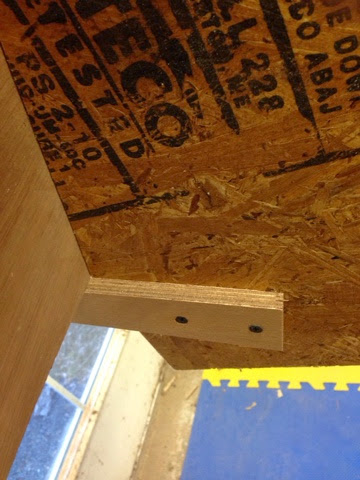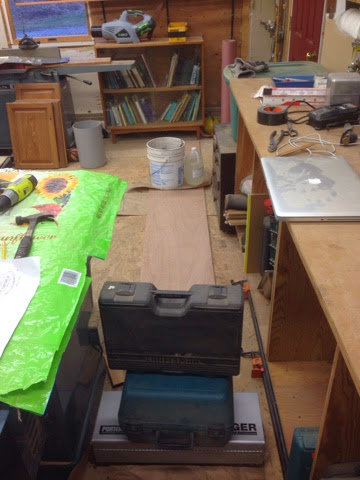24 April 2015
I am **way** behind on this blogging thing, which is a shame because I'm sure to leave out lots of build details. My beloved Boston Bruins have alas left me an entire Spring clear of any cheering obligations. Perhaps I can get one of the Bruins to put down their golf clubs and help me build the boat -- they've got plenty of free time.
As you can see in the accompanying photos, I was working on planing the hog. The power planer made a huge mess and a lot of noise. Not my favorite tool. If I didn't have a job I would do all this by hand -- good exercise. To get a decent view and better control of the planer, I put some old stair treads on milk crates and made a platform that ran from stem to stern. I wish I could say I got each curve just so, but the reality is that I got it pretty close and will be relying on the epoxy to fill the gaps. I'm not convinced that more care and time spent would have resulted in any significant difference. I'm just not that skilled and the multitude of intersecting planes and angles are tricky enough to keep my constantly guessing on how well things fit. I'm sure it could be better, but I'm also sure it will be plenty strong enough and not to 'gappy'. A huge fraction of the hog comes off. If I were to do this again, I think I would cut the hog on my band saw before I put it on the boat.
Another view of the hog. I attached blocks to the form so that I could then employ my old steel C-clamps. I bought a few buckets of these clamps in an estate sale. I'm sure the old carpenter would be happy to seem them put to such good use.

Still another view. You can see that the lines are not perfect. I did fine tune after this.
I figured out a bit later in the build that my shop vac would plug right into the planar. Shame on me for not figuring this out sooner. I spent an entire afternoon after the hog planing incident cleaning up all the surfaces in the shop. I don't think I'll ever get it all out of the shop. You can see the fraction of wood planed off in the picture below.



























